The Mysteries of Apothecaries

Life is full of mysteries.
Like, are aliens real? Who could win the next general election? How will the world end?
Or you know, how did we get our name?
Let’s rewind to a really, REALLY long way back, when men had to hunt for food with crafted weapons, start fires to stay warm, and avoid creatures that could eat them in a single bite.
Well, maybe not that far back.
Moving on, an apothecary would’ve been the predecessor to a modern day general practitioner. They treated patients, made and prescribed medicines, made house calls, and taught apprentices. Some also performed surgeries - which occurred at a time without anesthetics. Ouch.
The word apothecary came about in the 14th century, when it was taken from Old French, which in itself had been adapted from a Latin word, called apothecarius, which basically means "shop-keeper." In English, as well, apothecary originally referred to an individual: "a shopkeeper, especially one that stores, compounds, and/or sells medicaments." Some places even sold candles, cooking spices, salad oils, anchovies, toothbrushes, and tobacco.
And that was how apothecaries operated for the most part, behind the counter, waiting for the next person to treat. Apothecaries in the East and the West operated similarly, but there were still differences in how they operated, mainly in the types of ingredients used for prescriptions, regulations of ingredients (for example, some items may have been deemed illegal in the West, but legal in the East), the tools used to treat patients, as well as methods of treatment.
A popular type of treatment in the West was to use leeches. In the 18th century, they were used for the treatment of phlebitis and hemorrhoids. France in particular, was one of the largest consumers of leeches during that period. Some other popular ingredients used, include chalk for heartburn, calamine for skin irritations, and cinchona bark for fevers. Not all apothecaries owned stores and had to resort to street peddling to make ends meet.
Some had to resort to being quacks. A ‘quack’ was someone who could get people to buy useless products. They were not ducks, but they preyed on people’s fears and would often target richer patients. Some quacks made fortunes out of useless remedies for common aches or pains - headaches, stomach pains, and so on. They sold their products with an element of storytelling, theatrics, and some even printed out pamphlets to advertise their products. They would put on shows to attract potential customers.
Barbers of yesteryears would also take part in some way. They not only offered to cut hair, but would also dress wounds, and in some cases perform minor surgeries, or even extract teeth. However, when certain regulations were passed, these barber-surgeons were separated and the barbers kept a pole for identification purposes. It consisted of the colours red, white and blue and each colour had a purpose. Red was for blood, white was for bandages, and blue was for the vein.
Over in the East, a popular type of treatment was acupuncture. Traditional Chinese medicine states that health is the result of balance of the "yin" and "yang" of the life force known as "qi”. Illness is said to be the consequence of an imbalance of the forces. Acupuncture was a method to relieve pain by inserting needles into the body in over 300 pressure points. It was also probably one of the easiest ways to cosplay as a porcupine at the time.
Probably.
But let’s keep going. Some of the more interesting ingredients sold at Eastern apothecaries included snake oil, which, in its original form was used to treat arthritis and bursitis. It was a staple item of a railroad worker, and would often be applied unto the joints for pain relief at the end of a day’s work. It is made from the fats and oils of the Chinese water snake.

Source from Sony Pictures Television
Other ingredients included ginseng, which is known for its antioxidant properties as well as its qi restoring properties, and to boost the immune system. Another popular herb used was ginseng, which was used for aiding digestion, counteract feelings of nausea, and to improve lung function.
Apothecaries changed as time went on, and while there are still some that operate like they did back in the olden days (minus the surgeries), we named ourselves in honour of past apothecaries to carry on their spirit of invention and enterprise. We want to create modern apothecary for the modern man.




Leave a comment